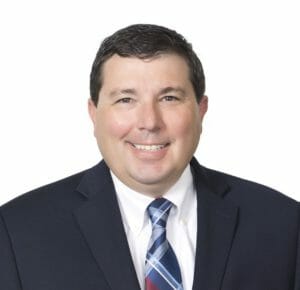The question on the minds of many Americans these days: Will 2023 usher in a recession? In September 2022, USA Today reported a 54% chance of a recession in the new year based on current indicators (up from 39% in June). As the percentage suggests, while there are definite hints toward recession, there is quite a bit of room for interpretation — and for the scales to tip in either direction. But, if a recession does indeed come to fruition, how will it impact the financial sector? And, how significantly? And what is the outlook for banking in 2023?
To help address the uncertainties tied to the current and future economic climate as well as preview additional trends that may impact the financial services sector, Todd Gerber, regional president of WaFd Bank shares his insights and observations.
“Nobody — no one entity — is certain if we’re going to fall into a global recession or if it’ll only be Europe, which looks like they already are probably in a recession,” Gerber says. “What I can say for sure is at WaFd, we are bullish on the eight states that we do business in.”
READ ALSO: Best places to work in Arizona: WaFd Bank Arizona
READ ALSO: Learn more about WaFd Bank here
WaFd’s commanding posture, according to Gerber, is due in part to the Federal Reserve’s diligence and commitment to fighting inflation with raising interest rates. And, for Arizona, in particular, the state’s higher inbound migration compared with the rest of the nation. In fact, results from a United Van Lines’ study demonstrate that Arizona ranks as the No. 3 most popular state for inbound migration.
“As long as that continues, we will do better than probably most of the other states,” he says, “because that’s bringing jobs. And with the people and families, that help continues to drive the need for housing. And housing, whether it’s multifamily, rental or single-family buying, is a big part of our economy here.”
Recession protection
If one thing is clear — recession or not — WaFd is positioned well for whatever’s to come in 2023.

“2022 recorded the best earnings performance in WaFd’s 105-year history. We did all that while we’ve been investing heavily in technology and our people,” Gerber says.
When it comes to WaFd’s past year of success, however, it hasn’t been without its challenges. Alongside almost every other industry, banking has succumbed to the pressures ensued by the lean labor market. But even so, Gerber can point to several silver linings, one of which has been the ability to adapt to workforce obstacles as well as other pandemic and post-pandemic-related issues.
“We’ve been very flexible [at WaFd], and we pride ourselves on being flexible with hybrid work models,” Gerber says. “There are certain positions within the bank that can work exclusively from home. There are others that can work part-time from home, and then there are some in the branches where employees just have to be there. But we are pretty proud.”
And Gerber and his associates have a reason to be appreciative of the culture they have cultivated. The company has been able to hire more than 150 new people since 2019, amidst unprecedented workforce shortages.
“We’re still hiring,” Gerber adds. “We have open positions across WaFd, and we have open positions in Arizona.”
As for what else to expect in trends in banking for Arizona, Gerber says the cooling in the mortgage industry is likely to continue, with home loans being impacted by higher interest rates. And, should a recession hit, obviously, the cooling could become icy.
However, Gerber remains optimistic overall. “At least banking as a whole sector is in a healthier place than the last recession — specific to Arizona,” he says. “Mortgage lenders were more prudent than [during the 2008 recession]. That doesn’t mean we won’t have some issues going forward, but they won’t be some of the same issues. I think we’re in a better place.”
Tech tools and safety protocols
Another forecast for banking will be ongoing evolution and expansion in technological integrations. According to a recent online Forbes story, upwards of three-quarters of people in the U.S. prefer to bank digitally. Of course, as more of the population adopt online and mobile banking practices, cyber security threats and data breaches will continue to experience an uptick. Accommodating consumer needs and mitigating security risks will, in turn, demand financial institutions to be adaptive and vigilant in protection protocols.
“We’ve had to make banking much more accessible with better tools, both in our new online banking platform and our mobile app, because people prefer to be able to have multiple channels to use,” Gerber explains. “And we also just launched our voice-activated banking that helps increase security through multi-channel authentication and is an easy way to access your balances or transfer money.”
Career security
In closing, Gerber has a message for new generations entering banking as a career in 2023 and beyond. “I started almost 30 years ago,” he says. “Banking offers a lot of different career paths, probably now because technology is so involved in banking and financial wellness, as well as traditional loan operation. There are so many paths within banking. So, what I would say is you could enter a career in banking and change your jobs multiple times and still be within banking.”




